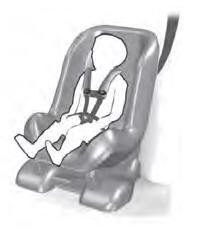Lincoln Aviator: Supplemental Climate Control / Description and Operation - Supplemental Climate Control - Overview
Overview
The cabin coolant heater system provides warm coolant to the heater core to warm the passenger compartment whenever the front DATC module requests heat and the HEV is in a driving mode, remote started, or doing Cabin Drive Conditioning.
The climate control system uses the cabin coolant heater to heat the passenger compartment in place of the heater core in low ambient temperatures. Once engine coolant reaches a sufficient temperature to heat the passenger compartment, the climate control system stops using the cabin coolant heater.
The cabin coolant heater system consists of the following components:
- Cabin heater coolant pump
- Cabin coolant heater
- Cabin heater coolant diverter valve
- Heater core
- Cabin heater coolant temperature sensor
 Description and Operation - Supplemental Climate Control - Component Location
Description and Operation - Supplemental Climate Control - Component Location
3.0L Ecoboost
Item
Description
1
Cabin heater coolant pump
3.0L Ecoboost - Hybrid
Item
Description
1
Cabin heater coolant pump
2
Cabin heater coolant diverter valve
3
Cabin heater coolant temperature sensor
4
Cabin coolant heater
3...
 Description and Operation - Supplemental Climate Control - System Operation and Component Description
Description and Operation - Supplemental Climate Control - System Operation and Component Description
System Diagram
Item
Description
1
SOBDMC
2
BCMC
3
PCM
4
Cabin Coolant Heater
5
Cabin heater coolant temperature sensor
6
Cabin heater coolant pump
7
Ambient Air Temperature (AAT) sensor
8
Engine Coolant Temperature (ECT) sensor
Network Message Chart - Module Network Input Messages - SOBDMC Cabin Coolant Heater
Broadcast Message
Originating Module
Message Purpose
Engine Coolant Temperature Data
PCM
This message contains raw value from the engine coolant temperature sensor...
Other information:
Lincoln Aviator 2020-2025 Service Manual: Removal and Installation - C-Pillar Side Impact Sensor
Removal WARNING: The following procedure prescribes critical repair steps required for correct restraint system operation during a crash. Follow all notes and steps carefully. Failure to follow step instructions may result in incorrect operation of the restraint system and increases the risk of serious personal injury or death in a crash...
Lincoln Aviator 2020-2025 Service Manual: Removal and Installation - Water Drain Panel
Special Tool(s) / General Equipment Resistance Spotwelding Equipment 8 mm Drill Bit MIG/MAG Welding Equipment Spot Weld Drill Bit Locking Pliers Materials Name Specification Flexible Foam Repair3M™ 08463, LORD Fusor® 121 - Removal WARNING: Electric vehicles damaged by a crash may have compromised high voltage safety systems and present a potential high voltage electrical shock hazard...
Categories
- Manuals Home
- Lincoln Aviator Owners Manual
- Lincoln Aviator Service Manual
- Interior Lamps
- Changing the Front Wiper Blades - Vehicles With: Heated Wiper Blades
- Drive Modes
- New on site
- Most important about car
Child Seats

Use a child restraint (sometimes called an infant carrier, convertible seat, or toddler seat) for infants, toddlers and children weighing 40 lb (18 kg) or less (generally four-years-old or younger).
Using Lap and Shoulder Belts
WARNING: Do not place a rearward facing child restraint in front of an active airbag. Failure to follow this instruction could result in personal injury or death.
